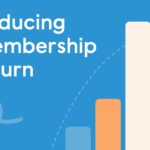When you kick off a staff meeting or member-focused networking event or conference, setting the tone to mix and mingle can be really challenging. Breaking that communication and relationship barrier down helps people feel more at ease and facilitates relationship building. It makes your event more fun, successful and ensures that everyone — staff and members alike — leave knowing the people around them a bit more.
What are icebreakers?
Icebreakers are an activity, game or task that get people mingling and talking. They usually involve getting to know people around you more and sharing information about yourself. They help break the metaphorical ice wall that can be up that stop you from reaching out and talking to someone.
The purpose of them is to give you information that fosters communication and a conversation. They give an opening to kickoff a relationship and can be the building blocks to new relationships or networks.
Icebreakers for your staff meetings VS member events
You can use the same type of icebreakers for meetings with your staff VS events with your members. You may, however, want to change the type you use based on:
- How well participants know each other
- How large the group is
- How established the relationships are within that group.
For example, If your staff have been working together for a while and there’s just a few of you, you may want to adjust a classic icebreaker to work for your group. “Would you rather?” questions could be about roles or jobs at your association. “Two truths and a lie” could be a little more personal or involve inside jokes with your team.
You will also want to pick icebreakers that are appropriate for the SIZE of your group. Large member networking events may require attendees to break into smaller groups or to adjust the rules slightly for larger audiences.
3 professional ice breakers for your next team meeting
Here are a few examples of icebreakers that are great for your staff or team meetings. They’re a bit more specific to work and are great for people you’re already comfortable around.
Why use icebreakers for your staff meetings?
When you’re on and off zoom calls all day, jumping between tasks and then hopping into a staff meeting, it can be hard to show up 100% mentally and be focused on the people you’re around. Icebreakers are a great way to grab everyone’s attention, make sure everyone is focused and also kick it off with a little social break.
You can get crafty with the questions you ask based on your teams or purpose of your meeting. Holiday or seasonal themes, marketing or sales focused questions, or getting as interactive as you can will make sure your staff are involved and excited to participate.
1. My First Job
Get everyone to write down what their first job was, how old they were and how long they worked there. Put all the results in the pile, then have everyone draw one randomly. Go in turns, reading them outloud. The goal is to guess who had what job.
This can also be done virtually by getting everyone to submit them to one leaders who will read them all our for everyone to guess.
2. Pointless Questions
This icebreaker really is what it sounds like. It’s about asking questions that don’t have any other meaning. Just see what peoples’ responses are!
Questions could include:
- If you could dine with someone, real or fictitious, dead or alive, who would it be and why?
- If you had an unlimited supply of something for the rest of your life (not money!), what would you choose and why?
- What is a movie you have watched that you STILL think about to this day?
- If you could have any super power, what would you want and why?
- What fictitious world / universe would you want to live in for a year?
- What is the weirdest food combination you’ve tried and LOVE?
The trick when coming up with pointless questions is to not ask “yes or no” questions.
3. Two Truths and a Lie
This one’s a classic. Have each person state three things about themselves – two of which are true and one of which is a lie. (Note: They can be said in any order.) Then have the group guess which one they think is the lie.
This one is great for medium groups
10 Common Ice Breakers for all events
1. Find 10 things in common
This game is GREAT for large groups. Break your large group into smaller groups and encourage them to find 10 things that everyone in that group has in common.
Great for groups of all sizes because you can break them into smaller groups for this.
2. Would You Rather?
Go around the room and ask each person if they’d rather do X or Y. To keep things interesting, switch it up for every person. Here are a few ideas:
- Would you rather be without Internet for a week, or without your phone?
- Would you rather be too hot or too cold?
- Would you rather go deep sea diving or bungee jumping?
If you are in person and have a mid to larger sized group, you can have people stand up and move from one side of the room to the other depending on their preference. Then, after a few questions, split them up into groups and get them to discuss any trends, surprises or interesting observations.
3. The Starburst Game
Have each person draw one Starburst out of a bowl. Each color should correlate with a question, which that person will then have to answer. For example:
- Red – What’s your favorite movie?
- Pink – What’s your favorite food?
- Yellow – If you could go anywhere in the world, where would you go?
- Orange – If you could see anyone in concert (alive or dead), who would it be?
4. Stranded on a Desert Island
Go around the room and ask each person, “If you were stranded on a desert island and could only bring one thing, what would you bring and why?” It’s simple, but effective!
If you want to make it more challenging, you could try limiting the answers to non-food items, or luxury items only.
5. Who Done It?
Have everyone in the group write down something interesting they’ve done on a notecard or piece of paper (e.g. swam with stingrays, lived in 10 states, lost all four front teeth at once, etc.). The sillier the better. Then put those pieces of paper in a hat, pass it around, and have each person draw one and read it aloud. That person then has to guess “who done it?”
6. Never Have I Ever
Ah yes, another classic. Have each person hold up 10 fingers. Then go around the room and have each person announce something that they’ve never done, beginning with the phrase “Never have I ever…” For example, someone could say “Never have I ever been to Europe.” For each statement that is said, have the other players drop a finger if they have done that thing. The last person with any fingers up wins!
7. Human Bingo
Create a bingo grid and, in each square, write a characteristic, fact, or habit that people might relate to (e.g. has a dog, wears glasses, rides the bus to work, etc.). Make enough copies for everyone in the group, then have people go around and ask each other those questions. If someone matches the description, they can sign that person’s square, but they can only sign one square per grid. The first person to get bingo wins!
8. Speed Dating
Have people chat one-on-one for two or three minutes. Then when the time is up, have them move on to someone else. The benefit here is that they get to meet several people in a short period of time.
9. My Name Is
Have each person introduce themselves by choosing an adjective that starts with the same first letter as their name. For example, Adventurous Allen or Clever Carol. (This one’s particularly good if you have a large group and are pressed for time.)
10. The Interview
Split up into teams of two and have each person interview the other. Once the interviews are done, have each person state three interesting things they learned about their teammate.
Making the most of icebreakers
Don’t underestimate the value that icebreakers have to warm up your staff meeting or member event. Once people begin talking, they’ll feel way more comfortable not only to engage with each other, but to participate in your event or meeting activities.
















